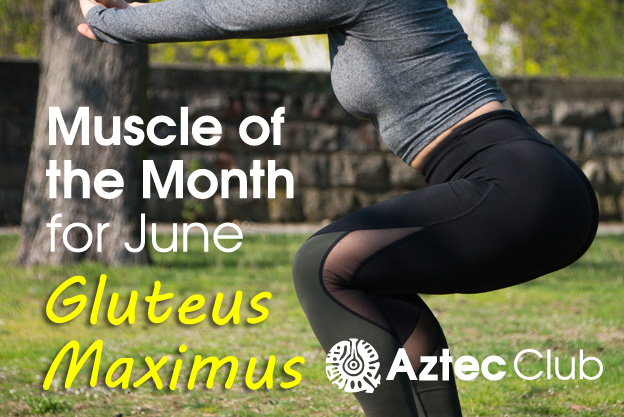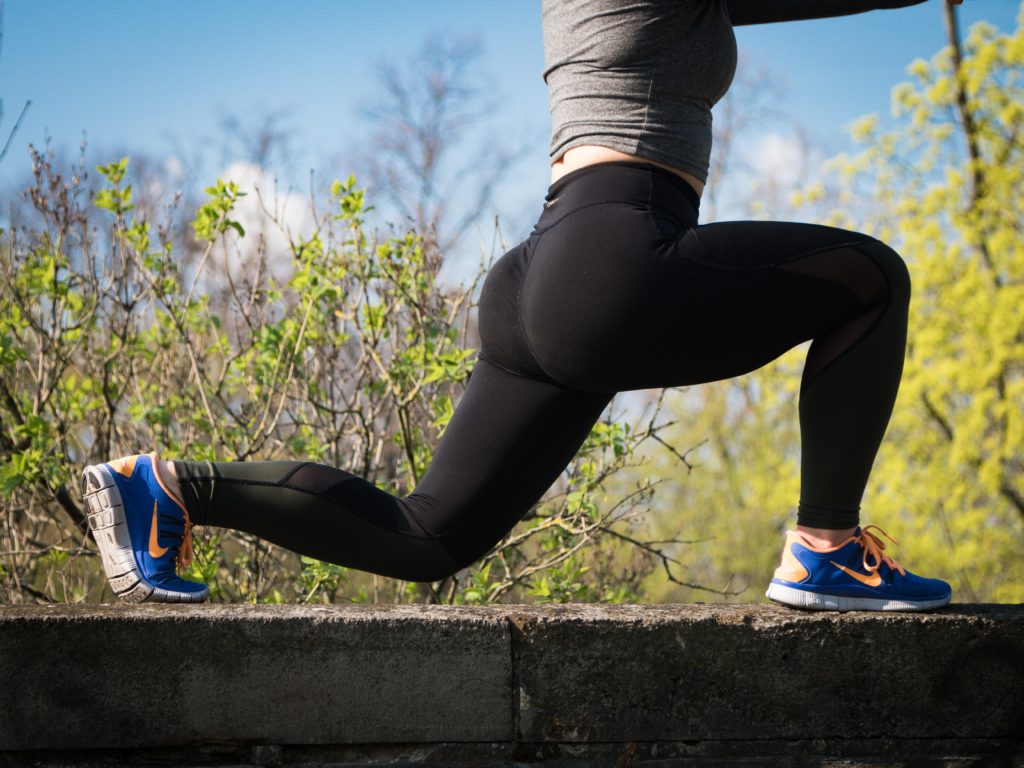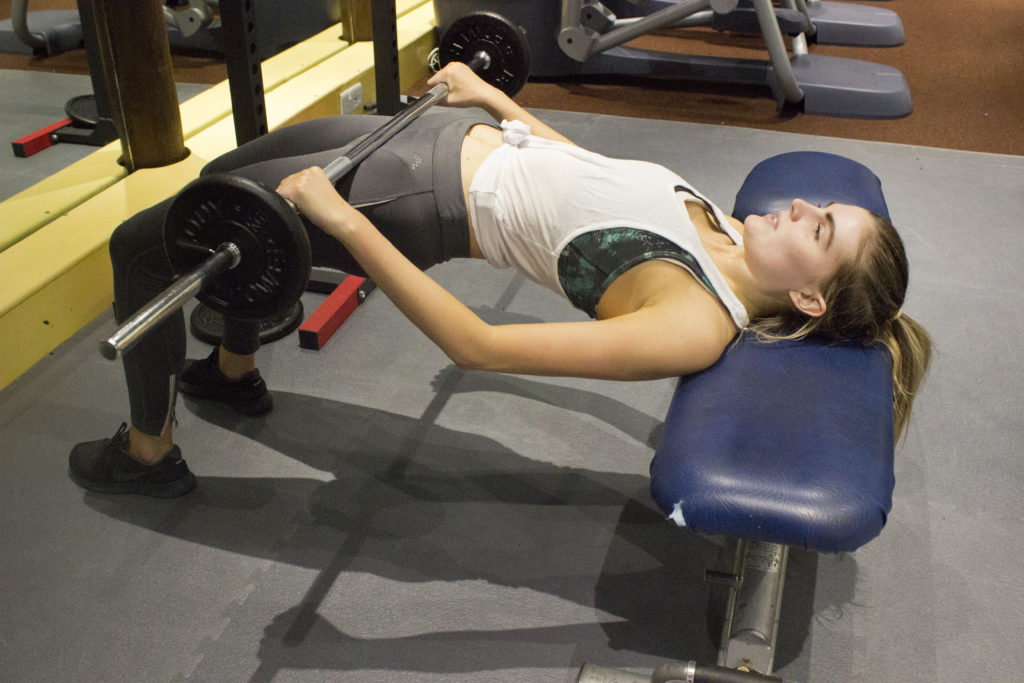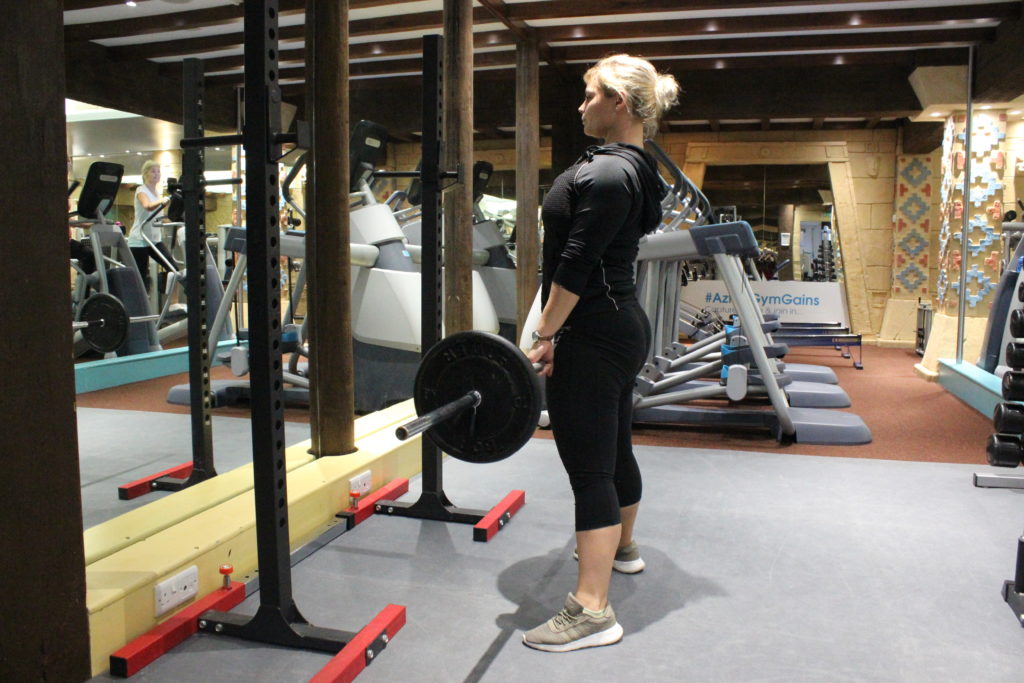 What and where is it?
What and where is it?
Commonly known as your glutes, the gluteus maximus is the outermost buttock muscle. It is regarded as one of the strongest muscles in the human body. It is connected to the coccyx, or tailbone, as well as other surrounding bones and is responsible for movement of the hip and thigh. It works alongside the other key muscles in this area, the gluteus minimus and gluteus medius.
Why is the muscle important?
The glutes are an essential muscle in keeping correct posture. Having a strong glute muscle helps support your lower back, hamstrings, knees and groin and prevent injury. Weak glutes can cause an imbalance in the hip, which may lead to excessive medial rotation of the femur and lateral tracking of the patella, thus potentially causing knee pain.
 How to activate the muscle?
How to activate the muscle?
We all know the problems of a sedentary lifestyle. Sitting for long periods of time causes the gluteus maximus to shorten and become ‘lazy’. Therefore when exercising, other muscles take the strain and injuries can sometimes occur. Activating the glutes before exercising them can really help ensure you are using the correct muscles.
The glute muscle can be a tricky one to activate as you need to keep it slow and really concentrate on feeling the muscle. Before you train the glute muscle spend a bit of time ‘activating it’ with the following exercises.
Glute bridge – lie on back, feet flat on floor, place hands by your sides. Squeeze glutes and push hips into air and hold for a second before relaxing back down. Perform 20.
Clam – Lie on side knees bent and legs together. Keep feet together and lift top knee up and squeeze glute. Perform 10 each side.
Activating the glute muscle before training means it gets a much better workout and you are less likely to allow your other muscles to ‘take over’ during exercises.
How to train your glutes?
Powerful glutes will help at all levels of your training and in whatever sport you do. Follow these exercises and focus on these all important muscles. Please ask your personal trainer or a gym instructor if you are unsure about any of these exercises. Always start with low weights and build up slowly. Remember, the Aztec Gym team are on hand to help you get the most out of your training.
Weighted hip thrust

- Begin seated on the ground with a loaded barbell over your legs. Place the bar so that it is directly above your hips, and lay down flat on the floor.
- Begin the movement by driving through with your heels, extending your hips vertically through the bar. Your weight should be supported by your upper back and the heels of your feet.
- Extend as far as possible, then reverse the motion to return to the starting position.
Deadlift
- To get into starting position, make sure to stand up right against the bar, lower your hips to reach the bar. Your hand should be slightly wider than the width of your shoulder. You can either hold the bar with an overhand grip, or have one underhand grip and one overhand grip – whichever feels best for you.
- Once you’ve got hold of the bar, push your hips back to the point where you feel tension in your hamstrings. Brace your abs and maintain a tall spine.
- Engage your lats and keep your chest proud throughout the whole movement. A good way to do this is to imagine as if you are putting your shoulders in your back pocket. This will help to avoid putting too much tension on your back.
- Lift the bar smoothly off the floor by extending your knees until you are standing in upright position, whilst keeping your abs tight, shoulders engaged and the bar close to your body.
- Exhale as you reach the top and squeeze your glutes. Slowly lower the bar back to the floor, keeping the bar close your body to return to starting position.
Romanian deadlift
- Grab a pair of dumbbells, or a barbell with plates loaded. Make sure there is enough space surround you to perform this exercise.
- Stand with your feet shoulder-width apart and hold the dumbbells, with palms facing you, or bar in front of you.
- Bend your knees ever so slightly and hinge forward from the hips, keeping your back straight.
- Lower the weights towards the floor, keeping them close to your body, and feel the pull down your hamstrings.
- Return to starting position, squeezing the glutes at the top.
Cable machine kick back
- Hook a leather ankle cuff to a low cable pulley and then attach the cuff to your ankle.
- Face the weight stack from a distance of about two feet, grasping the steel frame for support.
- While keeping your knees and hips bent slightly and your abs tight, contract your glutes to slowly kick the working leg back in a semicircular arc as high as it will comfortably go as you breathe out. Tip: At full extension, squeeze your glutes for a second in order to achieve a peak contraction.
- Now slowly bring your working leg forward, resisting the pull of the cable until you reach the starting position.
- Repeat for the recommended amount of repetitions.
- Switch legs and repeat the movement for the other side.
Kettlebell swing
- Start with the kettlebell on the floor slightly in front of you and between your feet, which should be shoulder-width apart.
- Bending slightly at the knees but hingeing mainly at the hips.
- Grasp the kettlebell and pull it back between your legs to create momentum.
- Drive your hips forwards and straighten your back to send the kettlebell up to shoulder height.
- Let the bell return back between your legs and repeat the move.
Finally, don’t forget to stretch.
Glutes stretch – lying
- Lie on your back with the soles of your feet on the floor.
- Cross your right ankle over your left knee, keeping your right foot flexed.
- Draw your left knee toward your chest and, reaching your right hand through your legs, interlace your fingers just below your left knee (under your left hamstring for a less intense stretch).
- Use your arms to pull your knee toward your chest until you feel a stretch in your right hip and glute area, and hold for 30 seconds.
- Release the stretch and repeat on the left side.
Pigeon pose
- Begin in a hands and knees position. Draw your right knee toward your chest and, with your knee bent, place your thigh and shin in front of you on the mat. Depending on your level of flexibility, you can keep your right foot close to your left hip or bring your shin forward so that it’s parallel to the front edge of your mat.
- Make sure both hips are facing forward and your back leg is engaged (you can keep it straight or bend your knee, creating a 90-degree angle).
- Leading with your chest, lean forward until you feel a stretch in your glutes and hip area. Hold for 30 seconds.
- Return to downward-facing dog and repeat the stretch with your left leg.
Enjoy your glute work out and let us know how you get on! You can read some of our other blogs here.